How to install vnc on linux
How to install vnc on Linux: 1. Use the "yum install vnc vnc-server" command to install vnc; 2. Use the "yum install tightvnc-server" command to install "tigervnc-server".

#The operating environment of this tutorial: linux7.3 system, Dell G3 computer.
How to install vnc on linux
The first thing you need to know is what VNC is. VNC (Virtual Network Computing), a display screen sharing and remote operation software using RFB protocol. It is operating system agnostic and therefore works cross-platform. For example, you can use Windows to connect to a Linux computer through VNC Viewer.
The VNC system consists of a client, a server, and a protocol. The purpose of the server is to share the screen it is running on, and the server passively allows the client to control it.
Next, let’s talk about how to install VNC on Linux
1. First, check whether the VNC service is installed: Enter the command: rpm -qa | grep vnc, as shown in the figure below, it has been installed. If you do not proceed to the next step 
1-1, install VNC: [root@localhost ~]# yum install vnc vnc-server
Install tigervnc-server: [root@localhost ~]# yum install tightvnc-server
Set the VNC password for the first time (remember the password here, you will need it when you come back to use VNC Viewer): [root@localhost ~]# vncserver, note that the password here must be at least The 6-digit
can also create multiple desktops by executing the vncserver command multiple times.
2. Configure the firewall.
If the firewall is not configured, client VNC will not be able to connect to Linux. In fact, VNC is just like our remote desktop. When you want to remote your own desktop, the first thing you need to do is to change some configurations on the firewall, right? Otherwise, the remote connection fails, and the reason is the same.
Configure firewall command:
[root@localhost ~]# iptables -I INPUT -p tcp –dport 5901 -j ACCEPT
[root@localhost ~]# iptables -I INPUT -p tcp –dport 5801 -j accept
In this place, two desktops are added. The corresponding relationship between the desktop and port is: desktop 1 corresponding to 5901, desktop 2 corresponding 5801, or you can set
3 to configure the desktop client. Enter the command: [root@localhost ~]# vi /root/.vnc/xstartup, the following interface will appear: 
Press i in this interface to enter the editing state, and add the following content at the end:
[ -x /etc/vnc/xstartup ] && exec /etc/vnc/xstartup
[ -r ##HOME/.Xresources ] && xrdbHOME/.Xresources ] && xrdbHOME/.Xresources xsetroot -solid gray
vncconfig -iconic &
title “$VNCDESKTOP Desktop” &
gnome-session &
The modified interface is as shown in the figure: 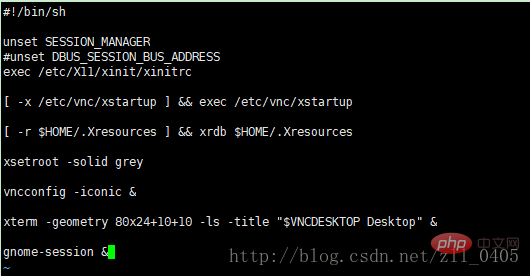 The prerequisite for installing this step is that the Gnome desktop environment is installed in Linux
The prerequisite for installing this step is that the Gnome desktop environment is installed in Linux
3 -1. Check whether the Gnome desktop environment is installed: enter the command: [root@localhost ~]#yum grouplist
or [root@localhost ~]#yum grouplist | more
If the gnome desktop environment is not installed, it will display:
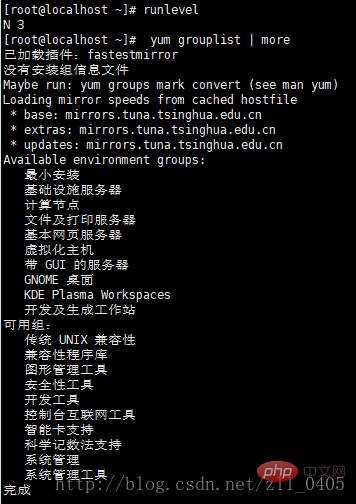 If the desktop environment has been installed, it will display:
If the desktop environment has been installed, it will display: 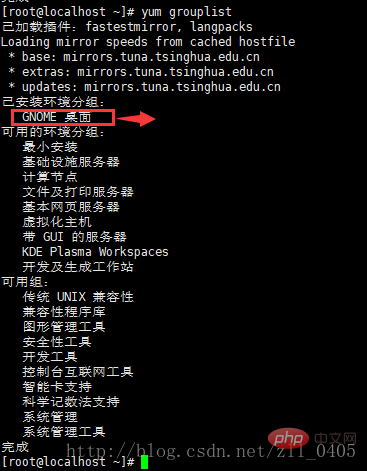 3-2. Install the gnome desktop graphical environment command (this process is relatively long and requires more things to install):
3-2. Install the gnome desktop graphical environment command (this process is relatively long and requires more things to install):
[root@localhost ~]# yum groupinstall “GNOME Desktop”
3-3, close and restart the service
Close the service: Vncserver –kill :1
Restart the service: vncserver :1
Use vncserver – list can check how many desktops are started
At this point, VNC has been installed. But nothing changed on Linux, and I still felt a little guilty. Just like when I used remote desktop for the first time, I finished the configuration, but I didn't know whether it was successful, so I needed to use another computer to connect to see if it could be successful.
4-1, install VNC Viewer on your computer: 
4-2, open it and create a new connection, as shown in the figure: 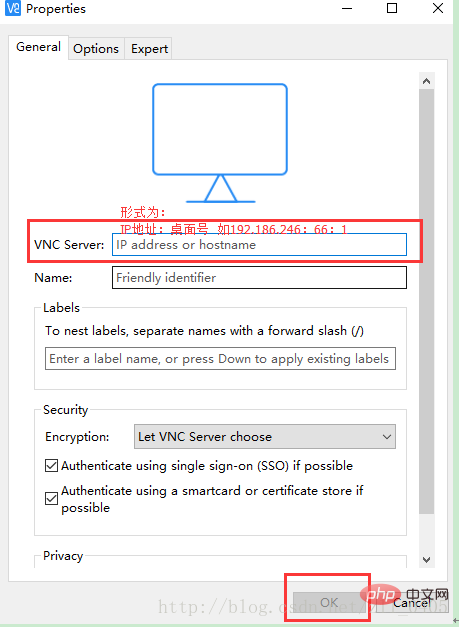
4-3, find the VNC you created, as shown in the figure below, right-click the mouse and select Connect: 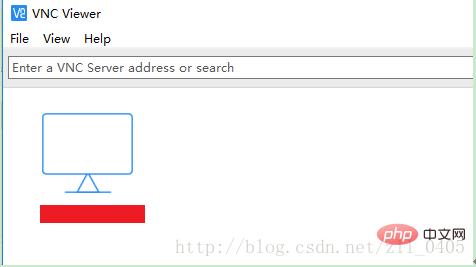
4-4, enter the password you entered when you created the VNC (if Forgot to see the introduction of 1-1, 1-1): 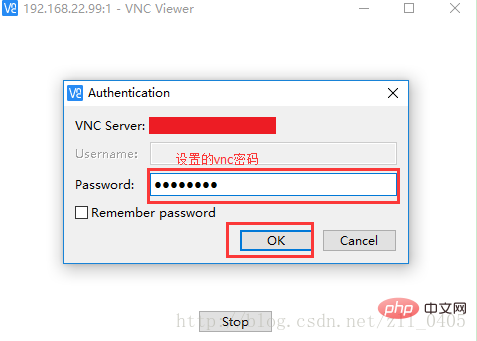
4-5, when this interface, select Continue: 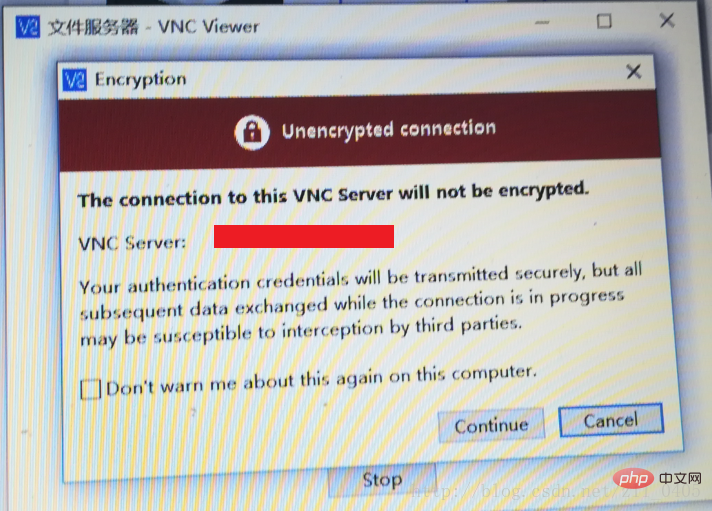
and then succeed.
After each boot, you must manually start the VNC service by entering the command): vncserver or vncserver:1
Related recommendations: "Linux Video Tutorial"
The above is the detailed content of How to install vnc on linux. For more information, please follow other related articles on the PHP Chinese website!

Hot AI Tools

Undresser.AI Undress
AI-powered app for creating realistic nude photos

AI Clothes Remover
Online AI tool for removing clothes from photos.

Undress AI Tool
Undress images for free

Clothoff.io
AI clothes remover

Video Face Swap
Swap faces in any video effortlessly with our completely free AI face swap tool!

Hot Article

Hot Tools

Notepad++7.3.1
Easy-to-use and free code editor

SublimeText3 Chinese version
Chinese version, very easy to use

Zend Studio 13.0.1
Powerful PHP integrated development environment

Dreamweaver CS6
Visual web development tools

SublimeText3 Mac version
God-level code editing software (SublimeText3)

Hot Topics
 What computer configuration is required for vscode
Apr 15, 2025 pm 09:48 PM
What computer configuration is required for vscode
Apr 15, 2025 pm 09:48 PM
VS Code system requirements: Operating system: Windows 10 and above, macOS 10.12 and above, Linux distribution processor: minimum 1.6 GHz, recommended 2.0 GHz and above memory: minimum 512 MB, recommended 4 GB and above storage space: minimum 250 MB, recommended 1 GB and above other requirements: stable network connection, Xorg/Wayland (Linux)
 Linux Architecture: Unveiling the 5 Basic Components
Apr 20, 2025 am 12:04 AM
Linux Architecture: Unveiling the 5 Basic Components
Apr 20, 2025 am 12:04 AM
The five basic components of the Linux system are: 1. Kernel, 2. System library, 3. System utilities, 4. Graphical user interface, 5. Applications. The kernel manages hardware resources, the system library provides precompiled functions, system utilities are used for system management, the GUI provides visual interaction, and applications use these components to implement functions.
 vscode terminal usage tutorial
Apr 15, 2025 pm 10:09 PM
vscode terminal usage tutorial
Apr 15, 2025 pm 10:09 PM
vscode built-in terminal is a development tool that allows running commands and scripts within the editor to simplify the development process. How to use vscode terminal: Open the terminal with the shortcut key (Ctrl/Cmd). Enter a command or run the script. Use hotkeys (such as Ctrl L to clear the terminal). Change the working directory (such as the cd command). Advanced features include debug mode, automatic code snippet completion, and interactive command history.
 How to run java code in notepad
Apr 16, 2025 pm 07:39 PM
How to run java code in notepad
Apr 16, 2025 pm 07:39 PM
Although Notepad cannot run Java code directly, it can be achieved by using other tools: using the command line compiler (javac) to generate a bytecode file (filename.class). Use the Java interpreter (java) to interpret bytecode, execute the code, and output the result.
 How to check the warehouse address of git
Apr 17, 2025 pm 01:54 PM
How to check the warehouse address of git
Apr 17, 2025 pm 01:54 PM
To view the Git repository address, perform the following steps: 1. Open the command line and navigate to the repository directory; 2. Run the "git remote -v" command; 3. View the repository name in the output and its corresponding address.
 Where to write code in vscode
Apr 15, 2025 pm 09:54 PM
Where to write code in vscode
Apr 15, 2025 pm 09:54 PM
Writing code in Visual Studio Code (VSCode) is simple and easy to use. Just install VSCode, create a project, select a language, create a file, write code, save and run it. The advantages of VSCode include cross-platform, free and open source, powerful features, rich extensions, and lightweight and fast.
 What is the main purpose of Linux?
Apr 16, 2025 am 12:19 AM
What is the main purpose of Linux?
Apr 16, 2025 am 12:19 AM
The main uses of Linux include: 1. Server operating system, 2. Embedded system, 3. Desktop operating system, 4. Development and testing environment. Linux excels in these areas, providing stability, security and efficient development tools.
 vscode terminal command cannot be used
Apr 15, 2025 pm 10:03 PM
vscode terminal command cannot be used
Apr 15, 2025 pm 10:03 PM
Causes and solutions for the VS Code terminal commands not available: The necessary tools are not installed (Windows: WSL; macOS: Xcode command line tools) Path configuration is wrong (add executable files to PATH environment variables) Permission issues (run VS Code as administrator) Firewall or proxy restrictions (check settings, unrestrictions) Terminal settings are incorrect (enable use of external terminals) VS Code installation is corrupt (reinstall or update) Terminal configuration is incompatible (try different terminal types or commands) Specific environment variables are missing (set necessary environment variables)






